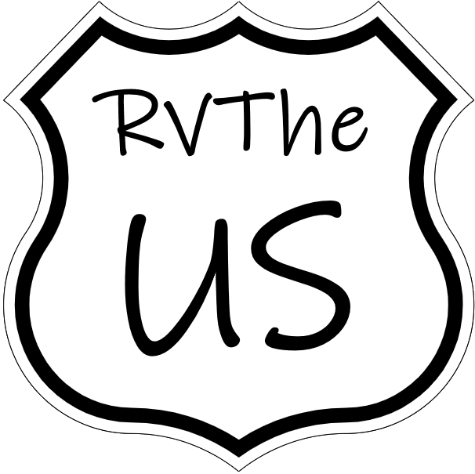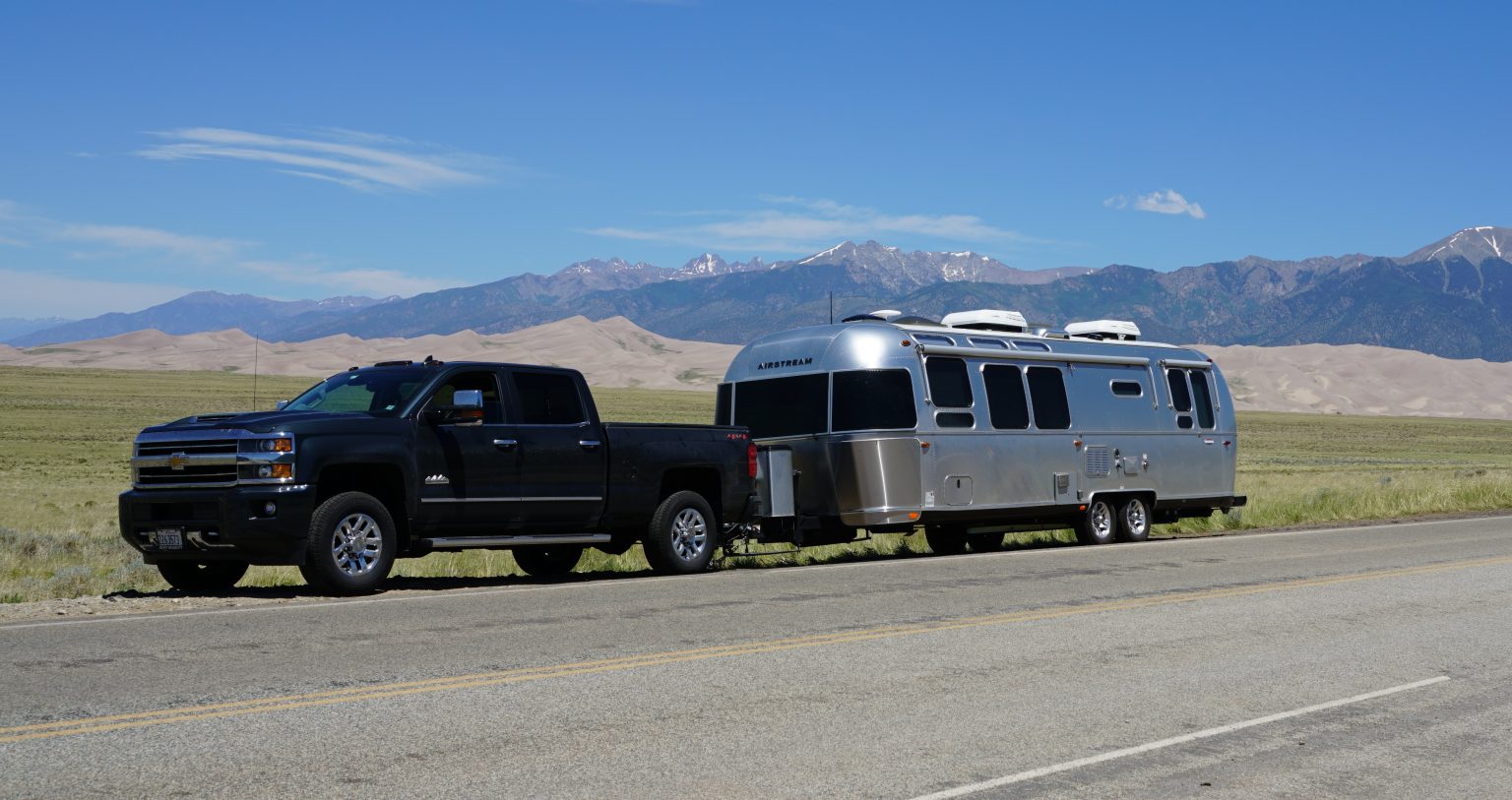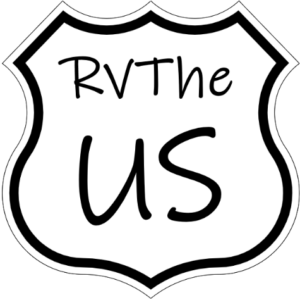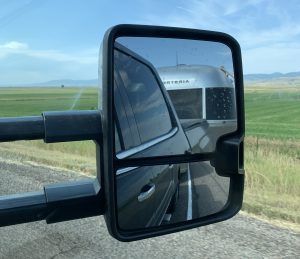My motivation to write this was because I couldn’t find anything out there that puts all these points together in one document. The purpose is to have a simple to understand document to be used as a reference for both RVers and anyone who pulls a trailer.
In our travels around the country, we have been witness to the aftermath of many trailer sway accidents and have followed many trailers swaying to the point that we backed way off in fear of being involved in an accident. With some simple guidelines, I believe every one of these accidents could have been prevented.
WEIGHT COMPATIBILITY
One of the most important factors to consider when towing is the weight rating of your tow vehicle and the weight rating of your towed trailer. Both the tow vehicle and the trailer will have a series of maximum weight ratings, which should not be exceeded. Look for the ratings in your manual, on placards, or on the manufacturer’s website.
RATING DEFINITIONS
- GVWR – Gross Vehicle Weight Rating – Maximum loaded weight of vehicle
- GCWR – Gross Combined Weight Rating – Maximum towing weight of vehicle
- GAWR – Gross Axle Weight Rating – Maximum weight on each vehicle axle
- GTW – Gross Trailer Weight – Total weight of trailer
- TW – Tongue Weight – Total weight at the coupling point
- Curb Weight – Total weight of an empty vehicle
- Dry Weight – Total weight of a vehicle without fluids
- Wet Weight – Weight of your RV with the fresh water tank and propane filled.
- CCC – Cargo Carrying Capacity; GVWR – Wet Weight = CCC
- Payload – Total weight of any cargo (including fuel) and people
Exceeding any of these ratings can damage your vehicle and cause dangerous handling problems, insufficient braking, leading to accidents and death. Go to a scale and weigh your tow vehicle and trailer loaded. If you exceed any of these weights, we don’t want to meet you on the road.
HITCH RECEIVERS, HITCH BALL MOUNTS AND HITCH BALLS
The hitch receiver accepts the hitch ball mount and the hitch ball mount accepts the ball. Most trucks come with a receiver from the factory, while many smaller vehicles must have an aftermarket receiver mounted to the vehicle. All of these components have a maximum weight rating, which must not be exceeded.
TONGUE WEIGHT RANGE TO PROPERLY BALANCE THE TRAILERS
Tongue weight as a percentage of the trailer weight is critical to avoid trailer sway. The manual for our trailer says the tongue weight should be 10%-15% of the loaded weight of the trailer. It cannot be overstated how important it is that you load your trailer in the range recommended in your manual. I saw a graph from calculations done by a trailer engineer, if the trailer is loaded outside of the recommended range the probability of trailer sway dramatically increases.
SAFETY CHAINS
Safety chains between the tow vehicle and the trailer are there to keep the trailer moving as a unit with the tow vehicle should the trailer become separated from the tow vehicle. The chains should be the proper length; short enough so that they do not drag on the ground and long enough so they do not bind in a turn. Use safety chains.
CHECK YOUR TIRES
Make sure your tires are in good condition and properly inflated. The manufacturer’s inflation pressures can be found in the driver’s side door jam on most tow vehicles and in the trailer manual. Under inflated tires build heat and stand a high chance of blowing out. Many trailer tires have a lower speed rating than you might think. Make sure you do not exceed the speed rating! Did you check to make sure your spare tires both on the tow vehicle and trailer are in good shape and properly inflated?
CHECK YOUR LIGHTS
After you connect your trailer lights, have someone stand on all four corners of your rig and watch the lights as you test them.
KNOW YOUR HEIGHT
Ask the drivers showcased in the famous Youtube channel 11foot8 if they wish they knew the height of their vehicle. Enough said.
WEIGHT DISTRIBUTION AND ANTI-SWAY
This is a complex subject that can be made fairly simple.
Weight distribution hitches transfer weight back onto the front wheels of the tow vehicle and level the tow vehicle. It is dangerous to tow with the tow vehicle’s front end higher than it would be without the trailer hitched. Braking, control, and visibility are all negatively affected.
Anti-Sway hitches work to dampen trailer sway. Any trailer can develop sway if the factors that promote sway are present. We recently made a 3,500 mile trip camping in the Rockies. On that trip we averaged seeing a trailer sway accident every 900 miles! When you see serpentine like skid marks leading to the scene of the accident and see no anti-sway hitch, it’s pretty easy to ascertain what happened. Many weight distribution hitches are also anti-sway. There are many online resources about these hitches, please do your homework. We want to see you in the campground, not at the end of one of those sets of skidmarks!!
MIRRORS
If you can’t see the back end of your trailer with your mirrors, then you don’t have the correct mirrors for towing.
CHECK YOUR BRAKES
When you first pull away after hooking up your trailer, test your brakes. If they don’t work, then figure out why!
NEVER BACK UP ALONE
We were sitting in our campsite watching someone off in the distance back a brand new trailer into their site. They backed said brand new trailer into a post with a loud crash. I’m sure there was significant and expensive damage. Four adults got out of the tow vehicle and walked back to survey the damage. We couldn’t believe what we were seeing. Never back a trailer without someone guiding you that can clearly see the back of the trailer. Remind your spotter that if they can’t see you in the mirror, then you can’t see them.
We love the trailer backing acronym that is 100% guaranteed to keep you from backing into something: “GOAL” – Get Out And Look!!!
KNOW YOUR ROUTE
Your rig is more difficult to maneuver than your car. Plan your route ahead and know where you can park and maneuver without getting pigeon holed. Just getting gas is a whole new experience when towing a trailer. Plan ahead and think ahead.
SLOW DOWN
We have seen many people towing their rigs in the left lane going like a bat out of hell. Slow down when towing. There are many benefits of slowing down, including saving fuel, but the most important benefit is safety. Our dash cam has probably captured hundreds of accidents as we travel around the country. Speed is the number one factor in many of these accidents. The probability of trailer sway increases dramatically as you increase speed. Tow your rig at a safe speed!
DO NOT HANG OUT IN THE LEFT LANE
The left lane is for passing only. Many states will write you a ticket if you are in the left lane and not actually in the act of passing. Drivers who hang out in the left lane are often subject to the ire of motorists around them.
EN ROUTE SAFETY CHECKS
Whenever you stop for a break, get fuel, etc. always walk around your rig and check items like tires, the hitch, connectors, hubs for heat, anything that is working loose, etc.
Towing can be done safely. None of these points are hard to understand or follow, so please do and get to your destination in one piece!
This document was originally posted and refined with member feedback in this forum post:
https://staging.rvthe.us/staging/community/threads/towing-safely.74/





